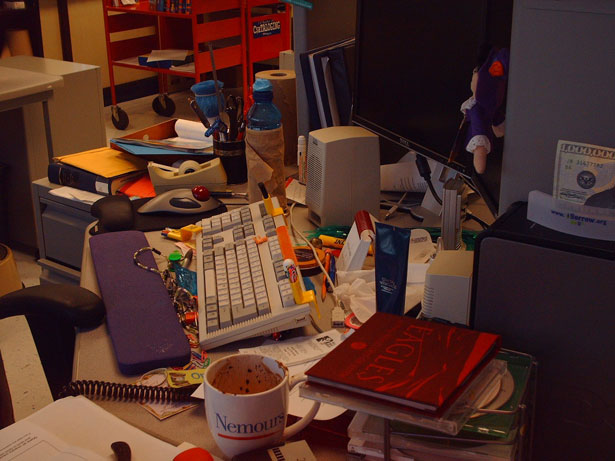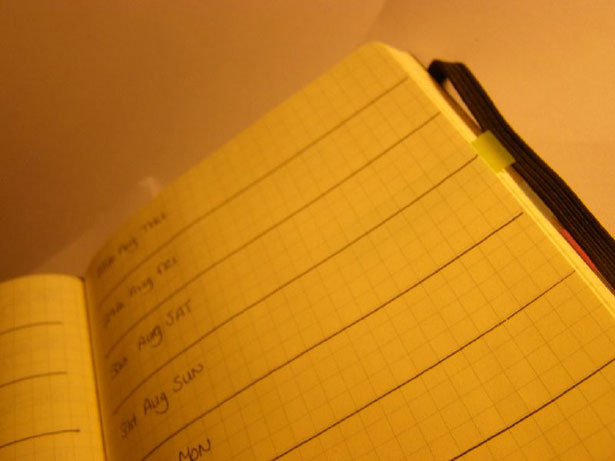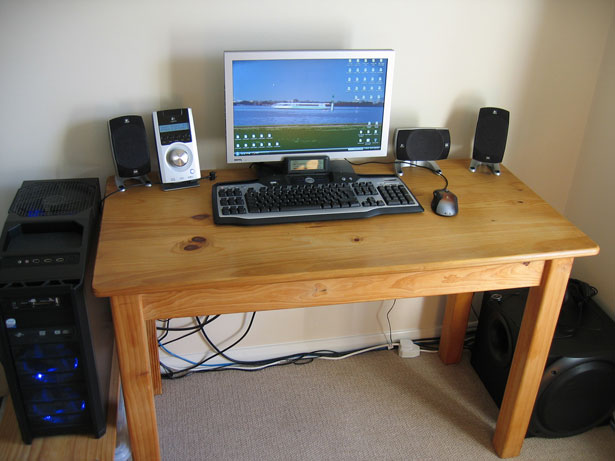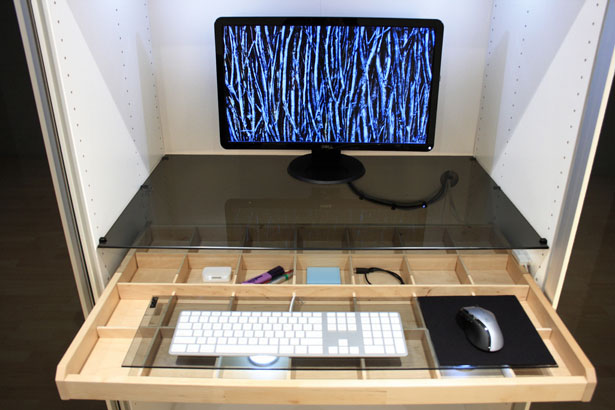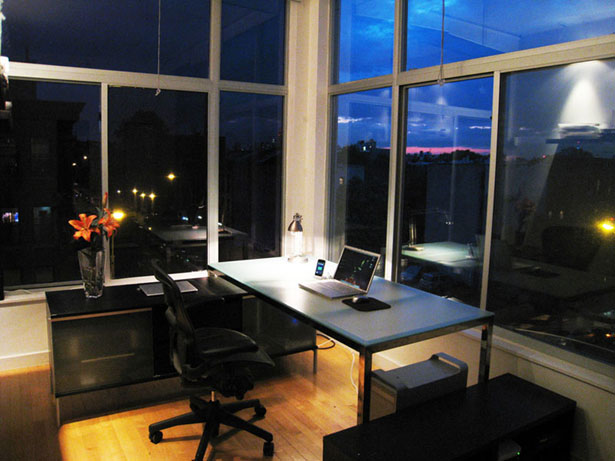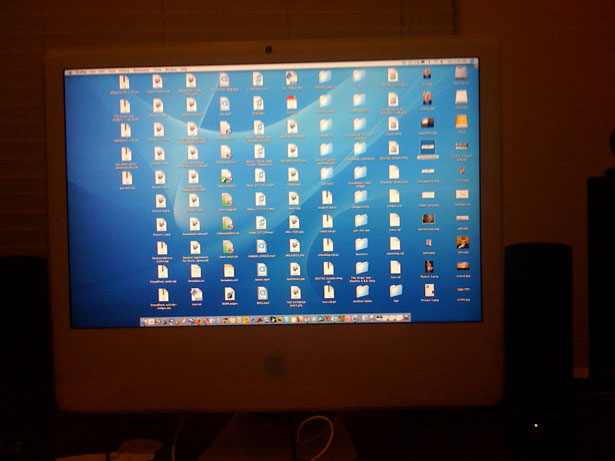 How much time do you waste on the average day looking for things buried somewhere on your desk? Or getting up to get something on the other side of your office? Or otherwise retrieving the things you need to do your job?
How much time do you waste on the average day looking for things buried somewhere on your desk? Or getting up to get something on the other side of your office? Or otherwise retrieving the things you need to do your job?
If you added up all those wasted seconds and minutes, you might be surprised at the percentage of your day that it takes up.
Taking the time to set up an optimal workspace can save you hours or even days over the course of a year.
It's worth taking a day or two to set up your desk and work area to better suit the way you work to save time later on. And the process isn't difficult.
It just takes a lot of planning and delving into how you work best, and then setting up both your physical and virtual workspaces to better cater to your work methods.
As mentioned, it's a good idea to set aside a day or so to optimize your workspace. You'll likely see the positive effects on your time almost immediately, and may notice a lot less frustration right away, too.
Not exactly an optimal work environment. Image by cybrgrl.
How Do You Work?
Let's assume that the majority of people reading this post are web designers and/or developers. That cuts out a lot of possibilities in the "how do you work" arena. But there are still plenty of differences in how individual web designers and developers work. If you want to set up your optimal workspace, you'll need to figure out exactly how you work best.
Think about how you work now and how you might improve your productivity if you had other tools and systems in place.
Don't try to completely overhaul your work methods, though, as you're unlikely to stick to new systems if they don't integrate with the way you're used to working. Baby steps will often get you better results than changing everything at once.
Make a list of the things you normally do in a workday and how you complete those tasks. Your routine might be fairly similar from day to day, or you might do completely different things on certain days of the week. Include all the tasks you regularly complete, whether on a daily, weekly, or monthly basis.
What Kind of Organizer Are You?
The next thing to consider is how you stay organized. Do you use a paper organizer or filing system? Post-it notes? A computer-based to-do list or project manager?
Image by Adam UXB Smith
If you use a paper-based system, think about how that needs to be accommodated within your workspace. Do you have a big organizer that needs space within easy reach on your desk? Or do you use post-it notes that you need to be able to stick to your desktop or the walls surrounding your desk? Would you be better served by something like a whiteboard?
Think through how you stay organized and make a list of the things that are necessary for it. You'll need to incorporate these things into your workspace, but that comes a bit later.
What Materials Are Important to Your Work?
Obviously a computer and likely a printer are going to be on this list. But what other tools do you need? You might have external speakers, a flatbed scanner, a desk lamp, paper, pens, an iPod dock, or countless other tools that you need and/or want to work.
Image by William Hook
Again, make a list of what's important to you. Then you'll need to weed out all the other stuff that's on your desk that isn't necessary.
Removing the clutter is important, as it will make it much easier for you to keep everything organized. Remember: clutter is the enemy of an optimal workspace. Every time you have to stop what you're doing to look for something, you're being less efficient and less productive.
Spheres of Importance
Now that you've figured out how you work and what's important to your workflow, it's time to get down to actually rearranging your workspace. Since most of you reading this are web designers or developers, let's make your computer the centerpiece of your layout. For most of you, it's where you do the vast majority of your work.
From there, figure out what else you use most often. This could be your organizer, graph paper, scratch paper, or anything else. Put this within arm's reach of your computer. Another thing that should always be within arm's reach is your trash and recycling bins. It's important to keep your desk clean, which means throwing things away before they have a chance to accumulate.
Think about other things you like to keep within easy reach of your workspace. This could be client files, reference books you use often, your printer or scanner, or anything else that you use on a daily basis. These things should be located within arm's reach or just beyond.
Then think of the other things you need to keep in your office, but maybe only use once or twice a week or less. It's not as important where you put these, though you'll still want them easily accessible. They can go on a bookshelf, or in a drawer, or wherever else you have space for them where you can keep everything organized.
The goal here is to make sure the things you use most often are closest to you, while things you use less often are further away. It's going to vary a bit for everyone.
For me, the things that need to be front-and-center on my desk are my computer, a notebook or two (or six), pens, and my cell phone and dock. For someone else, a graphics tablet or organizer might be more important and need to be in that immediate sphere. Others might want their printer within arm's reach if they're constantly printing things out.
Everything in Its Place
Within each sphere of importance, it's necessary to make sure everything has a place where it belongs. That means having some kind of holder for your pens, a specific place to keep your planner or organizer, and a designated spot for those reference books you want to keep within easy reach.
Image by AdamSelwood
Think about the way you organize. For some people, you might want to keep things like pens in your top desk drawer. For others, you might want a cup or a box right on your desk for them. The same goes for books or notebooks. Some people might want a shelf to keep them on, while others will be happy with a stack on their desk. There's no right or wrong here.
Once everything has its own place, make sure everything gets returned to that place at the end of each day, or even better: as soon as you're done with it. This will keep your desk clutter-free and make it easy to find things when you need them, making you more productive.
You may decide you need things to help keep your desk organized. This is fine, but don't go overboard. The simplest solutions are often the best. But consider purchasing things like desk drawer organizers, some kind of container for holding pens and pencils, and possibly an inbox or desktop file holders.
Again, make sure you only buy things that are going to fit into the way you work, and aren't going to cause you more problems or contribute to clutter.
Get Rid of Distractions
Distractions on your desktop will interfere with how productively you can work. That doesn't necessarily mean you have to keep your desk entirely Spartan, but it does mean anything that potentially distracts you should be removed.
Image by mkosut
Differentiate between distractions and creative aids. If something actually helps you in the creative process, then keep it. But if you use it as an excuse not to work, then put it elsewhere.
Maintaining Your Optimal Workspace
Once you have your workspace set up, you need to maintain it in order for it to continue to be an optimal workspace.
Most of these things should be done daily, either at the beginning or end of your workday (which one is completely up to you and depends on whether you prefer to organize at the end of the day or the beginning).
Personally, I recommend doing your maintenance stuff at the end of the day for a few reasons: First, because you'll be more likely to do it quickly and without distractions when you're done with your work (in the morning you might be more tempted to linger and procrastinate). Second, because it's nice to come into work in the morning to a clean and organized desk.
First of all, make sure trash gets thrown away or recycled. It doesn't matter whether it's a bunch of discared hand-drawn sketches of a website or empty soda cans or anything else, if it's trash, put it where it belongs. Places it doesn't belong include the top of your desk, under your desk, or anywhere around your desk that isn't a trash can. Honestly, this is one of those things that should be done as soon as you generate said trash, but at least once a day is vital. There's little worse than starting your workday surrounded by garbage.
Make sure you put everything back in its place when you're finished with it, or at least once a day. This way, when you need whatever it is, it's where you can find it. If everything has its own designated place, this should only take a couple of minutes.
Once a week or so, review your system. Make sure everything is in the proper sphere or importance and move things around if you need to. As you get your system more refined, you might only need to review it monthly or even less. Don't be afraid to change things around as your work methods change. And don't be afraid to change things back if a new arrangement just isn't working out for you.
Virtual Workspace
We've talked a lot about your physical workspace, but as designers and developers, it's likely more of your work takes place in a virtual space. It's important to arrange your virtual workspace for optimal productivity, too.
Image by Todd W Carpenter
So often, people try to create their virtual workspace based on what they think that workspace should be. They strive for a minimalist desktop, or they arrange their folders and files in a certain way because they heard that's how some other designer or developer does it.
Forget about how you think your virtual workspace should look or work or be arranged. Set it up however it's most efficient and effective for you. For me, I have a handful of folders on my desktop based on the different types of work I do. I have a folder for "work" that contains subfolders for every client I have, a folder for "websites" that has subfolders with all the files for my personal projects, and folders for "photos", "new fonts" (where fonts go until I get a chance to install them), and even a "miscellaneous" folder where I put all those things I don't have other homes for.
I tried to have a minimalist desktop, but it just doesn't work for me. I save things to my desktop all the time, too, but try to clean everything up and put it where it belongs every couple of weeks. Don't force yourself into some unnatural method of organizing your files and folders. Find the system that most seamlessly fits into your workflow.
The same thing goes for using tools like Spaces for keeping things organized. I keep saying that one of these days I'm going to start taking advantage of Spaces to keep all my various projects organized and separate, but so far I just haven't found a real need to. Just because it's available to you doesn't mean you have to use it. Use it if it helps you, but otherwise disregard it.
One thing you might want to take the time to do, if you haven't already, is to set up different workspaces in the programs you regularly use. You can set up different profiles in many of your programs (Adobe programs, specifically) for different kinds of projects. You may use a different set of tools depending on whether you're doing photo retouching or original artwork, designing a website or working on a print advertisement.
Taking the time to set up workspaces for each of these (or other projects you regularly tackle) means you'll have an optimal workspace no matter what you're working on.
More Resources
There are tons of great articles out there for better refining both your workspace and your work methods to improve your efficiency and productivity. Here are a few excellent choices to get you started:
- What is the Optimal Work Environment? - from eComm Tips
- Set Up Your Desk to Maximize Productive Web Development - from Freelance Folder
- Declutter Your Desk with a General Reference Filing System - from Work Awesome
- Organize Your Workspace for Maximum Productivity - by Gina Trapani, from the Harvard Business Review
- How to Defeat Workspace Clutter - from Work Awesome
- Your Work Space is Killing Your Productivity - from FreelanceSwitch
- 10 Ways to Relaxify Your Workspace - from StevePavlina.com
Written exclusively for WDD by Cameron Chapman, a freelance writer and designer.
How do you organize your workspace? What things have worked best for you?

